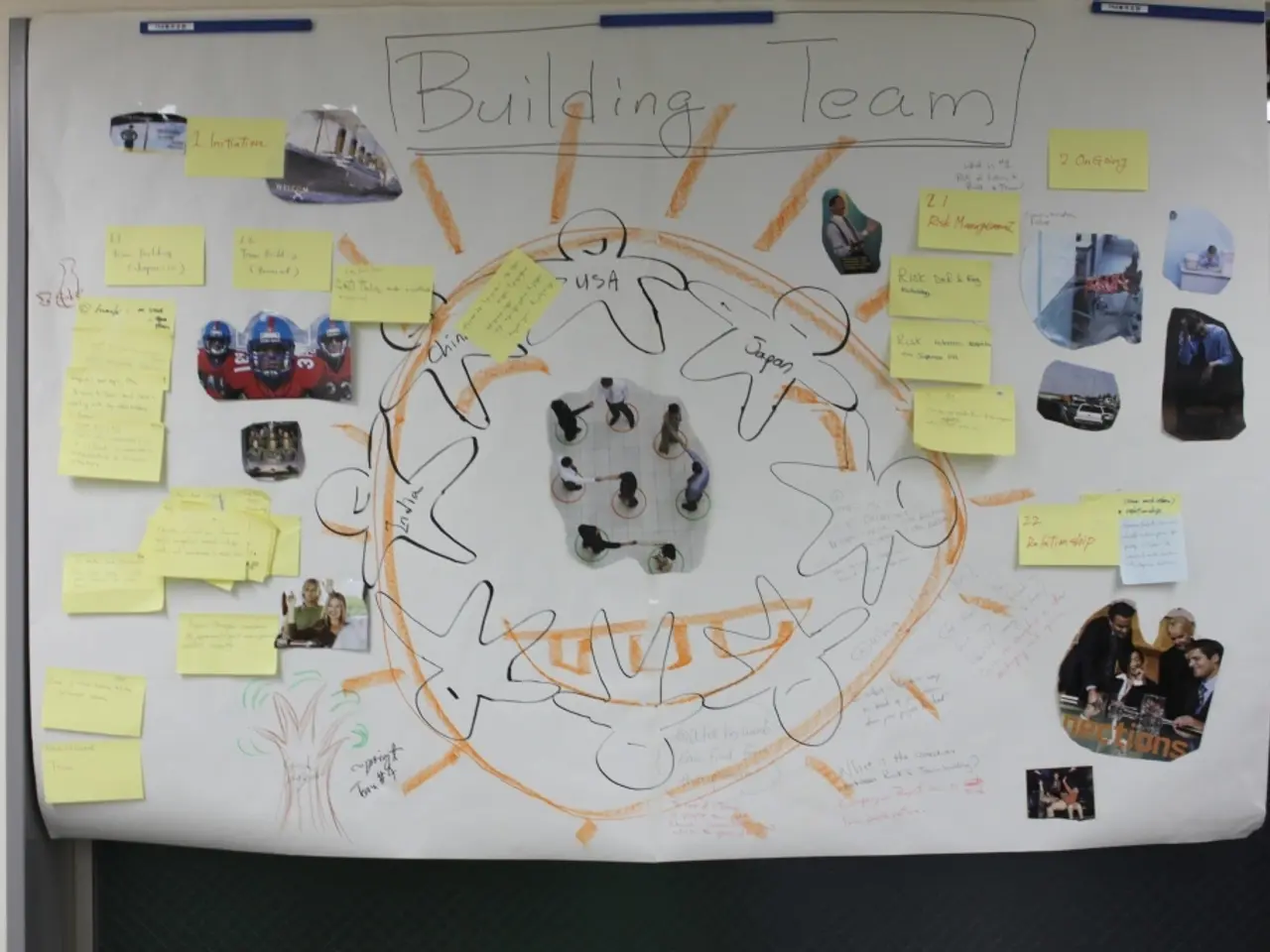Over Forty Varied Infographic Models for Efficient Talent Administration and Supervision
In the ever-evolving landscape of marketing, the latest trends are revealing a significant shift towards visual content, as highlighted in the recently published **Marketing Statistics Report 2022**, a joint venture by your platform and HubSpot.
This comprehensive report delves into the latest trends in using visuals in content marketing and the impacts of the pandemic on visual content across industries.
### Latest Trends in Visual Content Marketing
The report underscores the power of visual content, with content containing relevant images receiving 94% more views than content without images [1]. Consistently integrating visuals throughout content can lead to double the social media shares [1].
Video content, in particular, is dominating the internet, accounting for 82% of all internet traffic by 2022 [1]. Short videos like TikTok, Instagram Reels, YouTube Shorts, and infographics are now the most commonly used media formats with high return on investment (ROI), and 88% of marketers plan to maintain or increase spending on infographics [3].
However, challenges remain in producing high-quality visual content, with 43% of marketers finding it difficult to consistently create quality visual materials [3][5]. To address this, the report suggests the increasing use of AI tools, with 54% of marketers expected to use AI-driven tools by 2024 [3][4]. These tools can help in content idea generation, improving content quality, and even creating AI-generated images and videos that reduce production time drastically.
### Impacts of the Pandemic on Visual Content in Different Industries
The report emphasizes that COVID-19 has accelerated changes in marketing practices, making visual content a higher priority as brands adapted to more digital, remote, and socially distanced interactions [2]. Different industries showed varied responses:
- Many marketers transitioned to rely more heavily on video and interactive visual content to maintain audience engagement during lockdowns and reduced in-person contact [2]. - Social media marketing increasingly used visuals and automation tools to keep messages consistent and engaging despite challenges posed by the pandemic [4]. - The need for personalization and rapid content creation grew, with AI-powered tools enabling brands to generate tailored visual content efficiently [4].
The pandemic also heightened the demand for dynamic, value-driven video content on websites, email, and social channels, as traditional text-heavy content became less compelling to audiences craving more engaging formats [5].
In summary, the report indicates a strong shift towards video and image-centric content marketing, fueled by both evolving audience preferences and the accelerated digital transformation caused by the pandemic. Marketers increasingly leverage AI and automation to meet rising demand for high-quality, personalized visual content across industries [1][2][3][4][5].
Meanwhile, in the realm of Human Resources (HR), infographics can play a pivotal role in managing talent, improving retention, and boosting communication within a company. From onboarding processes to employee development, HR teams can customise infographics to address various aspects of their organisation's needs.
It's crucial to ensure all prospective candidates are well-informed about what to expect during the hiring process, including pre-employment screening. Additionally, customising an infographic can help share critical tips about working from home with your company's remote staff. An infographic can also help your HR team ensure they are making the right hires by shoring up the process for posting job openings and sorting through candidates.
As remote work becomes the new norm, managing remote employees poses unique challenges and opportunities. Stay tuned for more insights on how to navigate this landscape effectively.
- In the realm of Human Resources (HR), infographic makers can be essential tools for creating visually engaging content that aids in talent management, retention, and communication within a company.
- For instance, HR teams can customize infographics to cover various aspects of onboarding processes, employee development, and pre-employment screening, ensuring all potential candidates are well-informed.
- Furthermore, infographics can serve as a means to share critical tips about working from home with remote staff, helping HR teams manage their remote employees effectively in the ever-evolving landscape of technology and lifestyle.




